The Holy Land

Only days before Christmas it seemed logical to travel back in time for one of the reasons for the holiday season. The birth of Jesus of Nazareth. Which means we are wondering through Israel.
The world’s three major religions consider parts of the country of Israel scared. Muslim, Jew, and Christian point to the tiny strip of land bordering the Mediterranean Sea for their traditional and orthodox heritage. Israel sits on an ancient settlement dating back 1.5 million years according to archeologists. I happened to be in the Holy Land on a few auspicious occasions like the handing over of the ancient city of Jericho to the Palestinians.
I have used the Al-Aqsa Mosque (the gold dome in our masthead) marked with an icon on the map below as a point of reference. I have circled the countries that share a border or are close to the Holy Land. Historically, it has been a rough religious neighborhood for all the faiths.
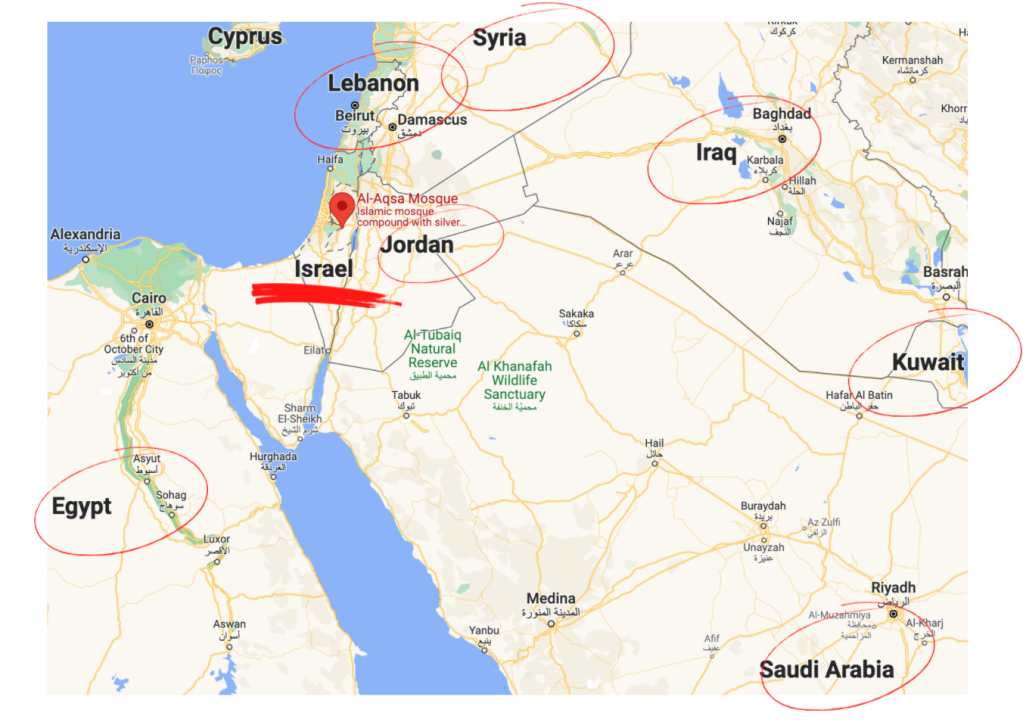
Landing in Israel you are greeted by the skyscrapers of Tel Aviv much like any ultra-modern city. Israel sits on a tiny strip (8,500 square miles) of beachfront with 9.2 million inhabitants. The land inside the Jewish State’s boundaries is equivalent to the size of the State of New Jersey. Forty-five US states are larger in land mass than Israel. Yet with 9.2 million people Israel would rank #11 in population if it were a US state.
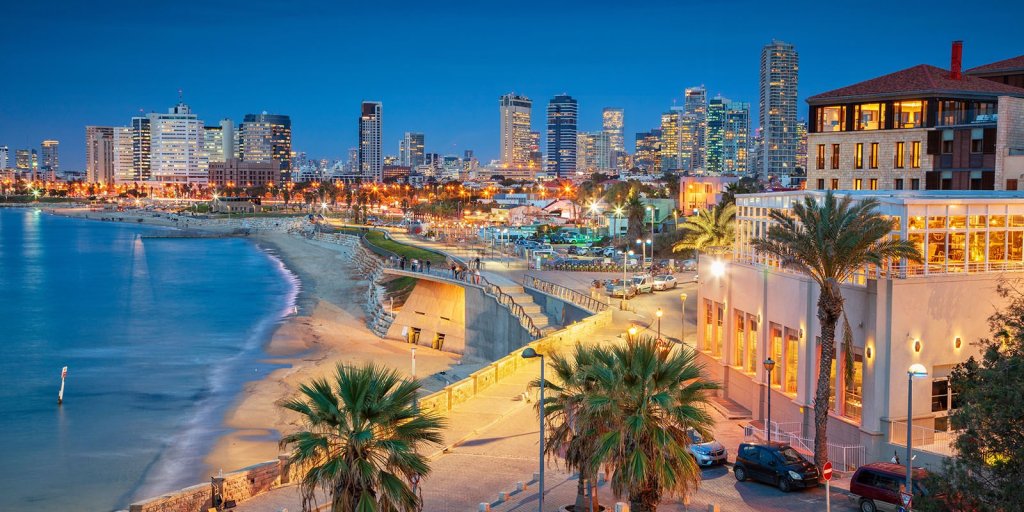
From Tel Aviv, Jerusalem is our next stop. Arriving at the old city of Jerusalem the golden Dome of the Rock shines in the day or night (See the photo below). The structure is situated on a flat elevated plaza known to Muslims as al-Ḥaram al-Sharīf (“The Noble Sanctuary”). For the Jewish faithful the Temple Mount is the site where the Temple of Jerusalem once stood. According to Muslims, the rock above which the dome was constructed on the exact point from which the Prophet Muhammad was taken up into heaven for an encounter with God (an event known as the Mira). Nearby, on the southern extreme of the plaza, is Al-Aqṣā Mosque; Muslims believe the Prophet was miraculously transported there from Mecca on the night of his encounter. The label “Al-Aqṣā Mosque” is often extended to the entire plaza to include the Dome of the Rock.
To understand each religion’s orthodoxy and heritage is to fully appreciate the ongoing conflict over the entire old city and most of Israel for that matter. Having spent a considerable amount of time walking the stone streets of the old city, I came to appreciate the cultural diversity and the desire for peace among people with differences in faith.
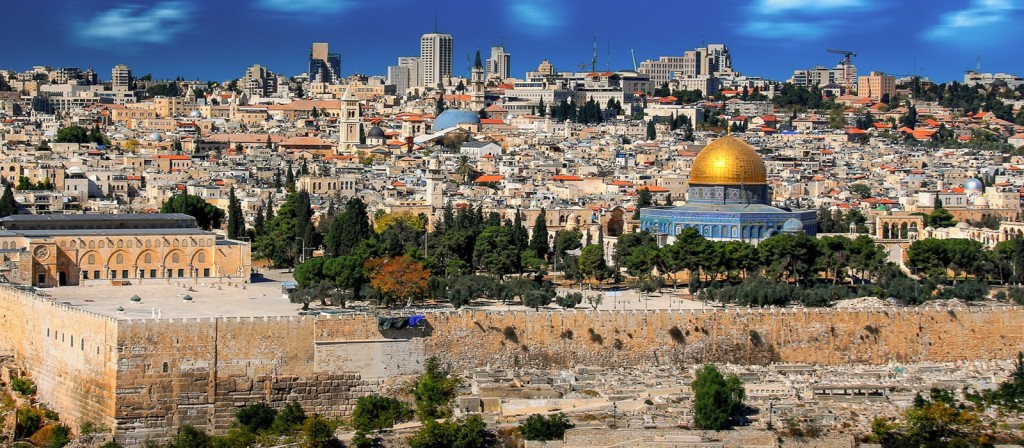
At 6’5″ and very pale, I can’t easily blend into the scenery in those middle eastern neighborhoods. I have to depend on the gentle hospitality of the locals. In the Arab sections or quarters in Jerusalem and elsewhere, I was warmly welcomed and treated extremely well. If you are a fan of middle-eastern food; the Hummus, Beef Shawarma, Kabobs, and Falafel are exquisite. Walking the old stone streets of antiquity, a sense of timeliness overcomes you. It’s unavoidable. Christ walked these same streets two thousand years ago.
As Christmas is upon us I thought I would take you to Bethlehem, the traditional birthplace of Christ in this post. Getting from Jerusalem to Bethlehem is not as simple as the short distance between the two cities suggests. The cities are separated by only a few kilometers. So close that the two cities almost join together at one. point. However, access between the two is limited by the fact that Bethlehem is under Palestinian control, and therefore entrance to the city involves crossing a border checkpoint. Passports are required. And as of this writing, I believe Israelis remain unwelcome in the West Bank.
The name West Bank is a translation of the Arabic term ad-Diffah I-Garbiyyah, given to the territory west of the Jordan River that fell, in 1948, under occupation and administration by Jordan then it was subsequently annexed in 1950. Founded in 1400 BCE, Bethlehem is a tiny Christian enclave in a Muslim state.
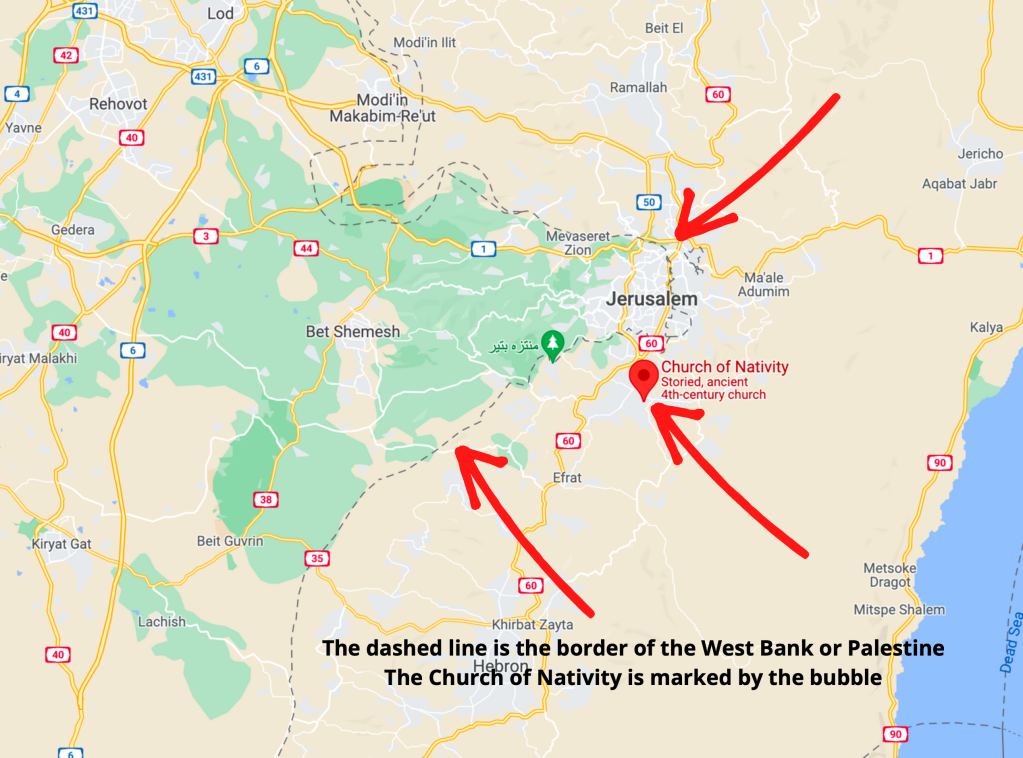
The pearl of our West Bank journey, mere days before December 25th, is Bethlehem’s Church of the Nativity. Built around 330 A.D. by the first Christian Roman Emperor Constantine, the church was mostly destroyed—possibly during a Samaritan rebellion in A.D. 529—although parts of the original mosaic floor remain. Soon after, the Byzantine Emperor Justinian rebuilt the church in a bigger, grander fashion—largely the structure that remains today. In A.D. 614, the Persians, who razed many other churches during wars with Byzantium, spared the Church of the Nativity, supposedly out of respect for a mosaic of the Magi shown wearing Persian attire. But that’s only one of the stories passed down through time. Below is a beautiful photograph of the city at night.
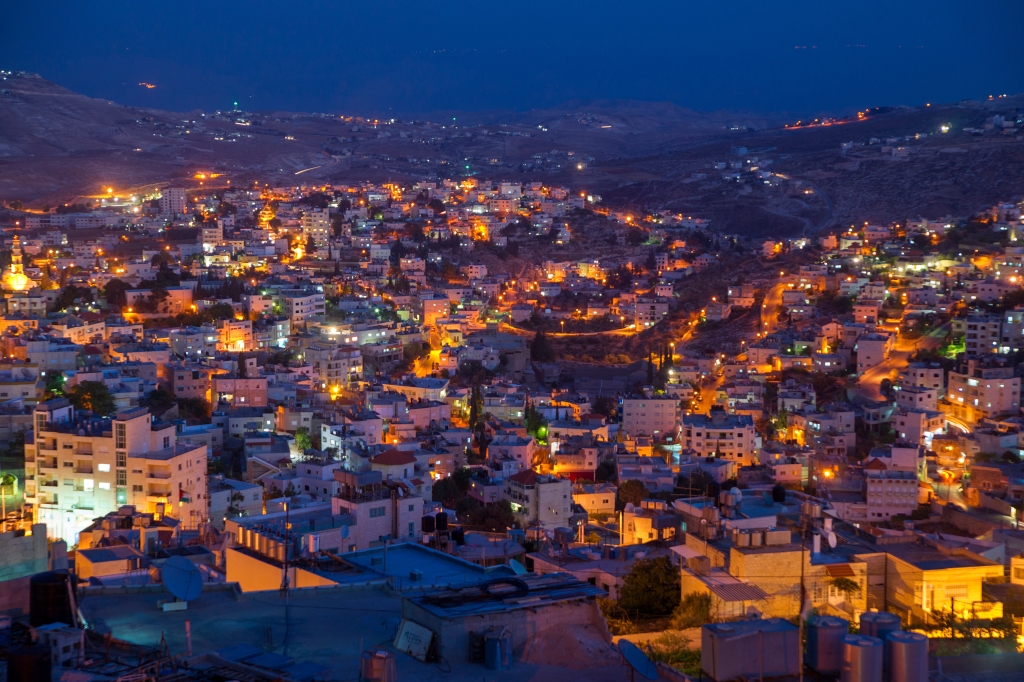
Construction of the Church of the Nativity commenced in 326 AD after being commissioned by Constantine the Great and his mother, Saint Helena. It was built directly over a cave in the area where Jesus Christ was thought to have been born. The church had an octagonal floor plan and a 4-meter hole at the center that allowed for a view of the cave.
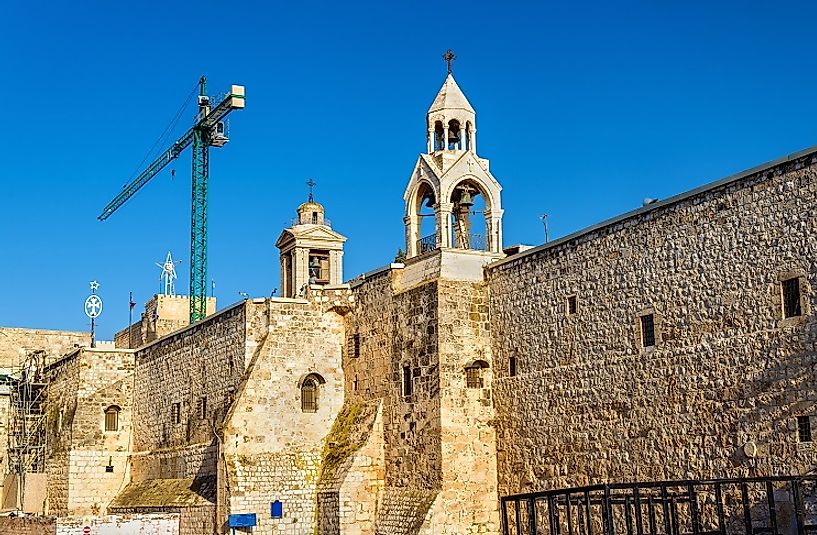
Unfortunately, the church was burnt down during a Samaritan revolt in 529 AD. Emperor Justinian rebuilt a larger church in 565 AD that has survived to date. Persian invaders in 614 spared the church from destruction because of the images in the church that showed the Magi wearing Persian clothes. The church has since survived fires, earthquakes, vandalism, and war. A prominent feature of the Church is the Door of Humility which is a small rectangular door at the entrance. According to old lore, the doorway was reduced from its original size to prevent carts from being driven inside. Famous guests were also forced to dismount from their horses before accessing the holy site. That tidbit of information is hotly debated among Arab and Israeli scholars.
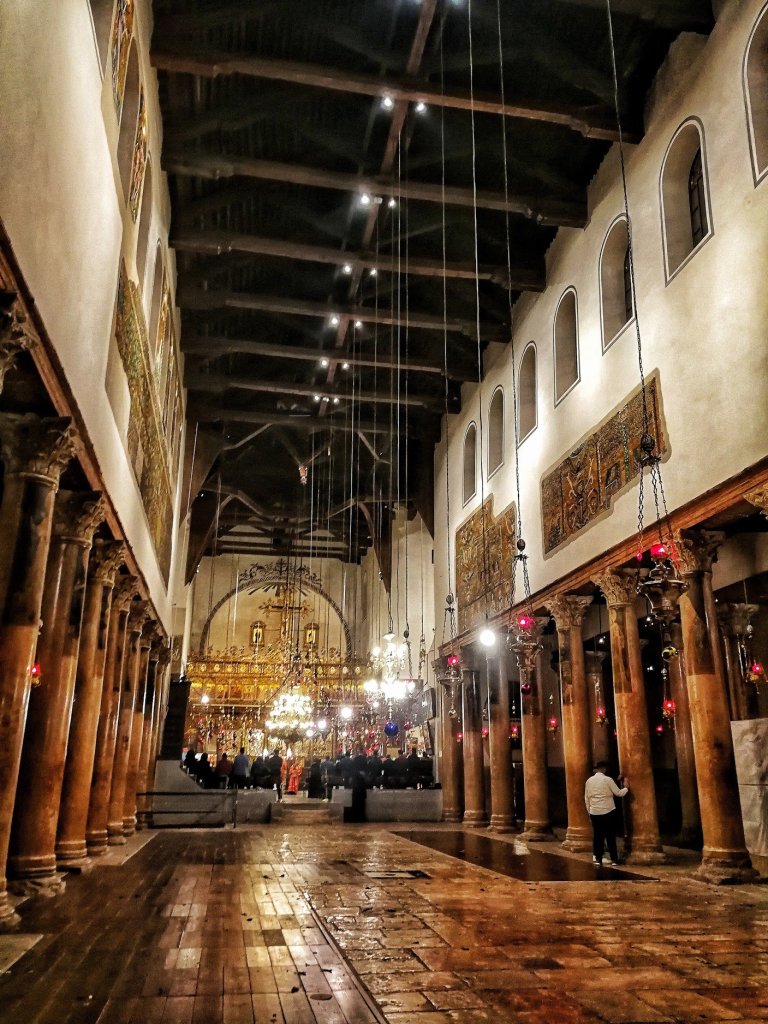
The columns inside the church have paintings of the Virgin, the Child, and Saints. Wall mosaic from the 12th Century forms part of the Church decoration. Floor mosaics showing birds, flowers, and geometric patterns make a beautiful carpet.
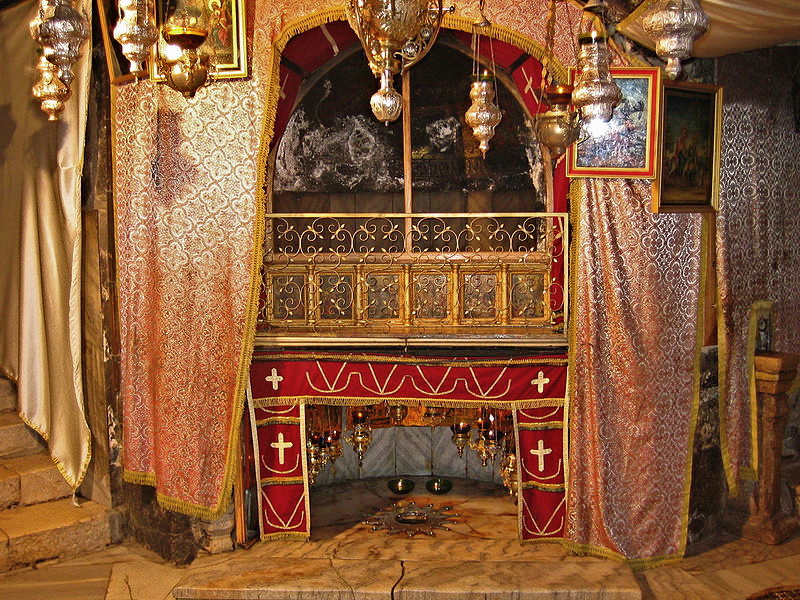
The Grotto of the Nativity, the place where Jesus is said to have been born, is an underground space that forms the crypt of the Church of the Nativity. It is situated underneath its main altar, and it is normally accessed by two staircases on either side of the chancel. The Grotto is part of a network of caves, which are accessed from the adjacent Church St Catherine’s. The tunnel-like corridor connecting the Grotto to the other caves is normally locked, but I did get to go down into the crypt to see the caves.
The caves below have a niche that is believed to be the place where Jesus was born called the Altar of Nativity. The exact spot where Jesus was born is marked beneath this altar by a 14-pointed silver star with the Latin inscription Hic De Virgine Maria Jesus Christus Natus Est-1717 (“Here Jesus Christ was born to the Virgin Mary”-1717). I must admit to being awe-inspired at the care taken to preserve the site through two millennia. And, just imagine for a moment, if the Christian caretakers of the antiquity got it right. Then I was standing where Jesus of Nazareth was born.
Until next time.

